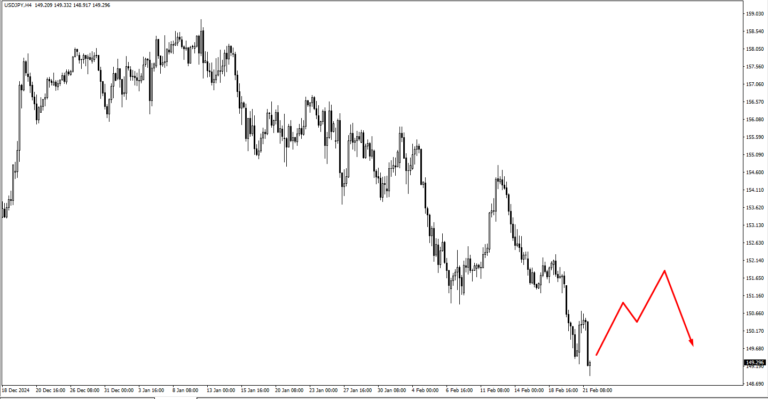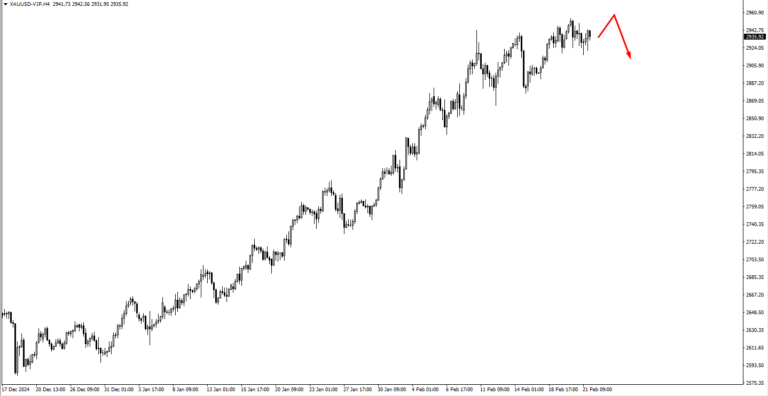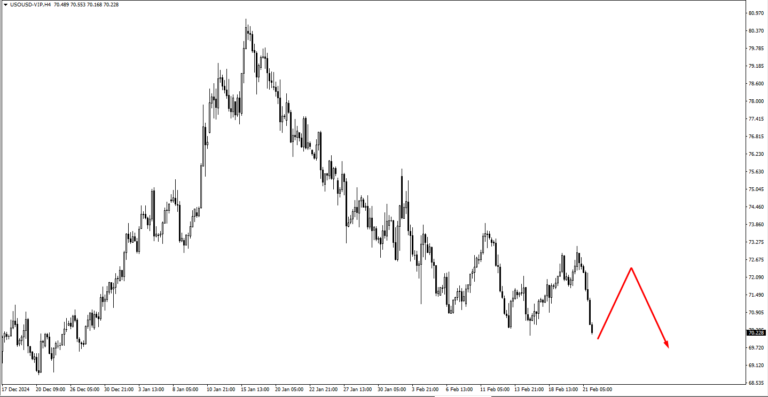Wang mengalir ke medium dengan pulangan tertinggi, tetapi apa berlaku apabila bank pusat mula memotong kadar? Sementara Federal Reserve, European Central Bank, dan Bank of Canada bersiap-sedia untuk langkah polisi seterusnya, pasaran forex terperangkap di antara jangkaan kadar dan ketegangan geopolitik. Risiko semakin meningkat, begitu juga dengan volatiliti.
Sejak awal tahun, bank-bank pusat global telah mengambil tindakan tegas terhadap kadar faedah. Federal Reserve, European Central Bank, Bank of England, Bank of Japan, Reserve Bank of Australia, dan Reserve Bank of New Zealand telah menyatakan pendirian mereka, menetapkan nada untuk bulan-bulan yang akan datang.
Namun, tumpuan telah beralih kepada keputusan kadar akan datang dari European Central Bank, Swiss National Bank, dan Bank of Canada. Tanda-tanda awal mencadangkan pemotongan kadar lebih meluas, mengukuhkan trend ke arah pelonggaran monetari.
Jika pemotongan kadar ini dilaksanakan seperti yang dijangkakan, Federal Reserve dan Bank of England akan kekal sebagai bank pusat utama dengan kadar faedah tertinggi di dunia.
Gencatan Senjata Dan Tarif Berleluasa
Selain dari polisi bank pusat, keadaan geopolitik juga memainkan peranan yang penting dalam mengemudi pasaran.
Dalam jangka pendek, optimisme terhadap perjanjian gencatan senjata US-Rusia di Ukraine telah meningkatkan sentimen risiko, membolehkan mata wang tradisional lemah seperti euro, pound British, dollar Australia, dan dollar New Zealand pulih berbanding dollar US.
Selain itu, ancaman tarif US yang menjadi punca volatiliti telah terhenti buat masa ini dan mencetuskan rali.
Walau bagaimanapun, menganggap kelemahan dollar akan kekal adalah tidak realistik. Dengan beberapa tarikh akhir semakin hampir, masing-masing berpotensi mengubah sentimen pasaran secara drastik.
Pada 4 Mac, tarif 25% ke atas produk Mexico dan Kanada di bawah International Emergency Economic Powers Act dijadualkan berkuat kuasa. Beberapa hari kemudian, pada 12 Mac, pusingan baru tarif 25% ke atas import keluli dan aluminium di bawah Section 232 akan bermula.
Detik paling tidak menentu mungkin akan terjadi pada 1 April, apabila Presiden Trump dijangka mengumumkan tarif timbal balik ke atas beberapa rakan perdagangan. Jika dilaksanakan, tarif ini boleh mencetuskan gelombang baru konflik perdagangan global, memaksa pedagang beralih ke mata wang safe haven seperti dollar US dan yen Jepun.
Prestasi Pasaran Minggu Ini
Dengan bank pusat menghampiri keputusan polisi kritikal di sebalik situasi ketegangan perdagangan global, volatiliti akan kembali memainkan peranan dalam kelas-kelas aset utama. Dengan konsolidasi harga di sesetengah kawasan dan pergerakan tajam di tempat lain, kami memerhatikan sama ada trend ini akan bertahan atau pecah dalam sesi mendatang.
Dalam forex, US Dollar Index (USDX) masih di bawah tekanan menurun meskipun ada pemulihan sementara. Indeks menemui sokongan sekitar 106.05, tetapi kami memantau sama ada ia dapat bertahan atau jika penurunan ke 104.90 atau 104.50 mungkin berlaku.

Jika sentimen pasaran terus condong ke arah risiko, kelemahan dollar mungkin berterusan. Dengan tarikh akhir tarif pada Mac dan April, sebarang kebimbangan perang perdagangan boleh membuat dollar melonjak sebagai aset perlindungan nilai.
Yen Jepun berpotensi untuk menjadi pemenang jika ketidakpastian global berterusan. Kini didagangkan sekitar paras 149.20, USD/JPY mungkin mengalami momentum menurun jika penghindaran risiko kembali.

Pergerakan bearish boleh dicetuskan pada paras 151.70, terutamanya jika pedagang beralih semula ke aset perlindungan nilai.
Komoditi juga merasai kesan turun naik mata wang. Emas kekal dalam zon jualan berhampiran 2945, dengan momentum menurun lebih kuat diperlukan untuk menarik lebih penjual. Jika harga meningkat, pedagang akan melihat 3070 sebagai potensi paras rintangan.

Sementara itu, harga minyak bertindak balas kepada sentimen pasaran, dengan minyak mentah didagangkan di bawah 73.50 dan menghadapi paras sokongan utama pada 71.85 dan 68.20.

Bitcoin, sering dilihat sebagai lindung nilai terhadap ketidakpastian ekonomi, juga menunjukkan tanda-tanda pembetulan. Jika BTC/USD jatuh di bawah 94,066 atau 93,381, ia mungkin mencetuskan lonjakan menaik. Walau bagaimanapun, pembetulan lebih dalam mungkin berlaku jika Bitcoin jatuh melepasi paras 89,146 dan bergerak mendatar, berpotensi menguji sokongan sekitar 80,000.
Pasaran Minggu Ini
Pada hari Rabu, 26 Februari, tumpuan tertumpu pada Consumer Price Index (CPI) Australia tahun-ke-tahun, diunjurkan pada 2.60% berbanding 2.50% sebelumnya. Kami percaya data ini akan menjadi pendorong utama untuk AUD/USD, terutamanya jika inflasi melebihi jangkaan.
Jika dollar Australia bergerak mendatar sebelum pelepasan data, corak bullish mungkin muncul, mendorong mata wang naik. Walau bagaimanapun, angka lebih lemah daripada dijangkakan boleh menyemai spekulasi pemotongan kadar lanjut dari RBA, mengekalkan tekanan menurun ke atas mata wang.
Beralih ke hari Khamis, 27 Februari, GDP awal US suku-ke-suku dijangka kekal pada 2.30%. Kami percaya angka ini penting dalam membentuk jangkaan terhadap polisi Federal Reserve.
Jika data mengejutkan ke atas, ia boleh mengukuhkan keengganan Fed untuk memotong kadar dalam jangka terdekat, berpotensi mengukuhkan dollar US. Sebaliknya, jika pertumbuhan GDP perlahan, ia mungkin menyemarakkan spekulasi pemotongan kadar menjelang akhir tahun, melemahkan dollar dan menyokong aset risiko. Kami akan memantau reaksi dollar terhadap data ini, terutamanya paras sokongan USDX.
Jumaat, 28 Februari, memberikan data ekonomi dari eurozone, Kanada, dan US, yang boleh memberi implikasi besar ke pasaran mata wang.
Preliminary CPI Jerman dijangka pada 0.40% berbanding -0.20% sebelumnya. Jika angka sebenar selari dengan unjuran, kami percaya ia akan positif untuk euro, mengukuhkan pendirian European Central Bank terhadap inflasi. Walau bagaimanapun, jika inflasi kekal lemah, ia mungkin memberi tekanan ke atas euro dan meningkatkan kemungkinan pemotongan kadar lanjut dari ECB.
Buka akaun live VT Markets anda sekarang dan mula berdagang.












